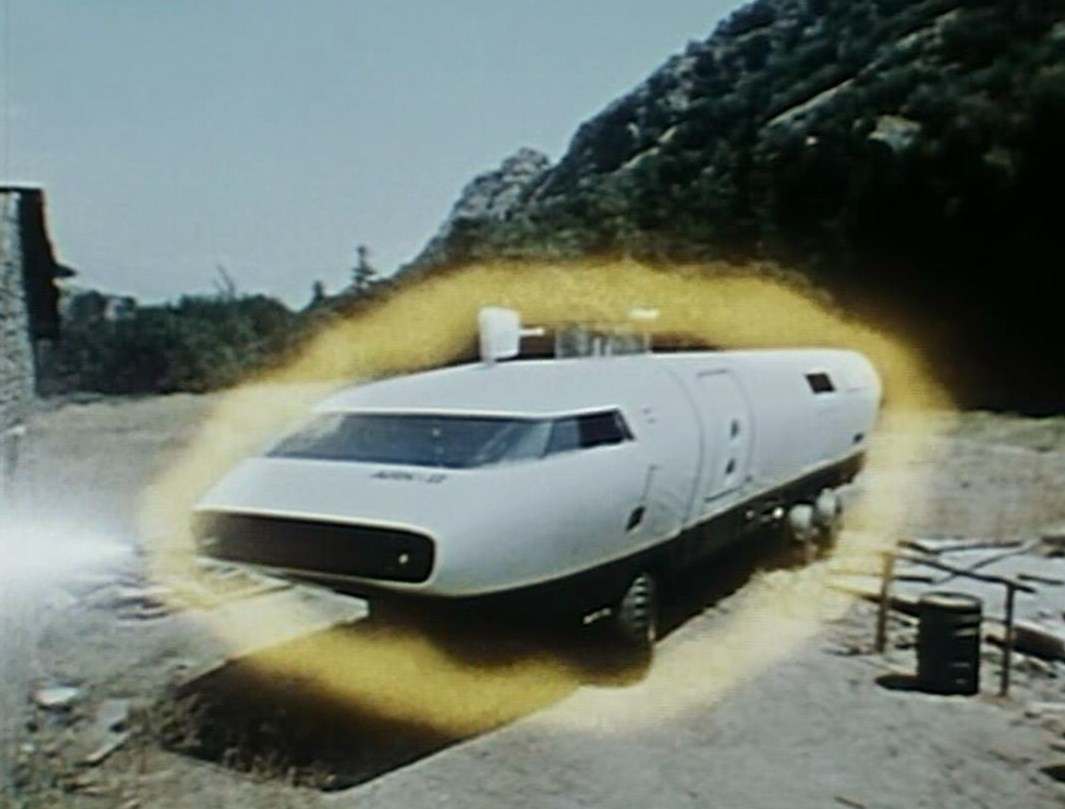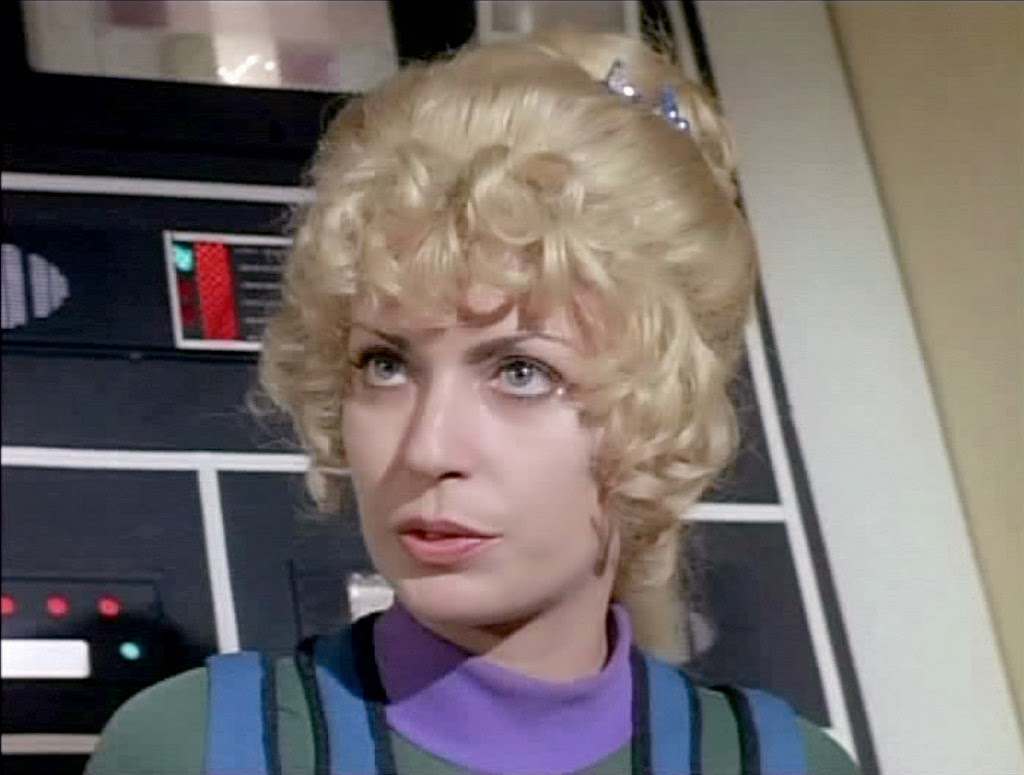America’s bicentennial year — 1976 — brought a number of new science fiction TV initiatives to the airwaves, at least briefly. This was the season of Jimmy Carter’s election victory, and the syndication success of Gerry and Sylvia Anderson’s space epic, Space: 1999 (1975 – 1977).
The three obscure series featured in this post, alas, didn’t share in that series’ success. Each of the following efforts lasted only one season, and then faded to seemingly permanent obscurity.
Ark II
Unlike the other series I have featured in this blog series thus far, Ark II is a Saturday morning TV series not a prime-time one. Created by Filmation, Ark II began airing on September 11, 1976, and ran for fifteen 22-minute episodes.
Set in the “world of the twenty-fifth century,” when civilization has fallen into ruin, a handful of scientists have “vowed to rebuild what has been destroyed.” To help in that cause is the great achievement, Ark II, a “mobile storehouse of scientific knowledge manned by a highly-trained crew of young people.”
Their mission? “To bring the hope of a new future to mankind.”
Like many science fiction TV efforts of the time, Ark II was rather determinedly a “civilization of the week” program; meaning that each week, the diverse protagonists traveled (usually by a ground vehicle; sometimes on foot…) to a new and strange civilization.
The crew of Ark II consists of the bearded Captain Jonah (Terry Lester), a scientist named Ruth (Jean Marie Hon), and a young scholar, Samuel (Jose Flores).
And in a weird, unspoken acknowledgment of Planet of the Apes’ continuing popularity in 1976, these young humans also travel with a talking chimpanzee named Adam who can play chess and drive the Ark in a pinch. Ignoring questions of hygiene, some episodes feature Adam preparing meals for the human crewmembers in the Ark II’s kitchen. Notably, Ark II never explains why Adam can speak, or if he is an anomaly among future simians.
One episode finds the Ark II crew awakening a 20th century man (Jim Backus) from suspended animation (“The Cryogenic Man,”) while another depicts the crew’s battle with a super-computer (“Omega.”) The real star of the series, however, is the colossal-sized, land-roving vehicle, which whether parked or in motion, still looks incredible.
The Gemini Man
NBC’s The Gemini Man (1976) was a second attempt after the failure of 1975’s The Invisible Man to utilize the premise of invisibility in the era of bionic TV programming. The short-lived series aired on Thursday nights (against The Waltons and Welcome Back Kotter) and was produced by Harve Bennett, Steve Bochco and Leslie Stevens.
The series focuses on Sam Casey (Ben Murphy), a groovy agent for a top-secret government agency called INTERSECT. In the pilot episode of the series, Sam is exposed to high-levels of radiation while attempting to recover a sunken submarine.
This radiation de-stabilizes Sam’s genetic structure and renders him invisible. Fortunately, Dr. Abby Lawrence (Katherine Crawford) and Dr. Leonard Driscoll (William Sylvester) equip Sam with a DNA stabilizer on his wrist-watch, which allows him to become invisible for fifteen minute stretches.
If he remains invisible for any longer than that his DNA is corrupted, and the Gemini Man is terminated.
Typical Gemini Man episodes find Sam battling an evil robot in “Minotaur,” grappling with amnesia in “Run Sam, Run,” and helping a defector escape the Iron Curtain (“Targets.”) The Gemini Man aired just six episodes before it was cancelled, leaving half its catalog unseen.
The series never achieved fame until the gang from Mystery Science Theater 3000 (1989-1999) roasted a syndicated movie version of two episodes (“Smithereens,” and “Buffalo Bill Rides Again”) dubbed Riding with Death.
Star Maidens
Star Maidens is a British/German co-production created by Eric Paice that makes the war between the sexes its central dramatic issue. The series was filmed in 1975, and aired in the New York market on Channel 5, WNEW in ’76. Star Maidens was produced by James Gatward, and features stunning production design from Keith Wilson, the genius who crafted the minimalist but spectacular look of Space: 1999.
The first 22 minute episode of Star Maidens commences with a voice over narration explaining the “golden years” of history on the distant planet Medusa. There, in “Proxima Centauri,” the planet developed a peaceful, advanced, art-centric culture wherein women were the unquestioned rulers and servile, lowly men functioned as “domestics.”
Then a pesky comet called Dionysus (noticeably a male figure in myth…) swung too close to Medusa and tugged the planet out of her natural orbit. Consequently, the “vast mass” of Medusa was “dragged” into the “frozen infinity of space.” The surface of the planet grew uninhabitable as it turned to ice, and the survivors of the disaster moved into underground cities, where the female-dominated culture continued and solidified power due to the crisis. Medusa drifted through space for generations until it arrived here…in our solar system.
What do the Medusans find on Earth as the series commences?
Well, if you ask the female scientists of that world, only a “great disappointment.” Because, “in violation of all common sense,” men rule the planet. Accordingly, this backward planet is judged “out of bounds” for all “civilized” space travelers.
In the first episode of Star Maidens, “Escape to Paradise,” two slaves, Shem (Gareth Thomas of Blake’s 7) and Adam (Pierre Brice) – tired of being taken for granted — plan their escape from the female-managed Medusa.
They flee their home world in Counselor Fulvia’s (Judy Geeson) space yacht and crash it on Earth’s surface.
Meanwhile, a group of Earthlings from the Institute of Radio Astronomy, led by beautiful and resourceful Liz (Liza Harrow) are on their way to the crash site. But Shem and Adam have also been pursued by Fulvia and her troopers…
Would you like to support Flashbak?
Please consider making a donation to our site. We don't want to rely on ads to bring you the best of visual culture. You can also support us by signing up to our Mailing List. And you can also follow us on Facebook, Instagram and Twitter. For great art and culture delivered to your door, visit our shop.








